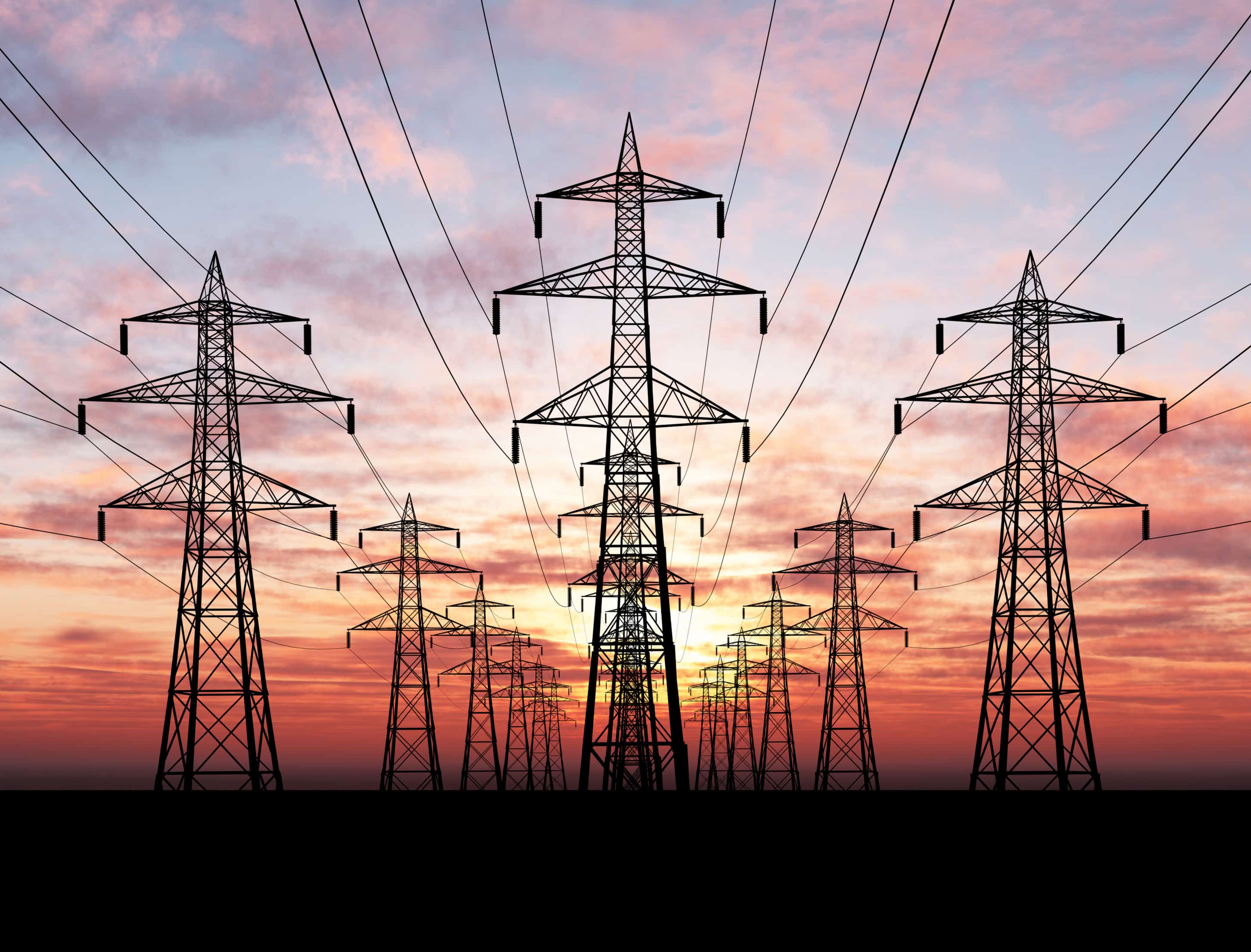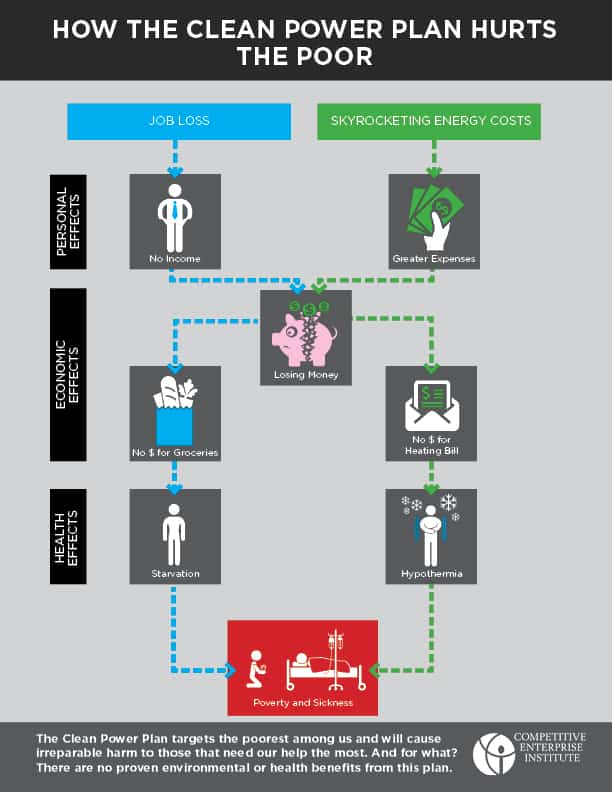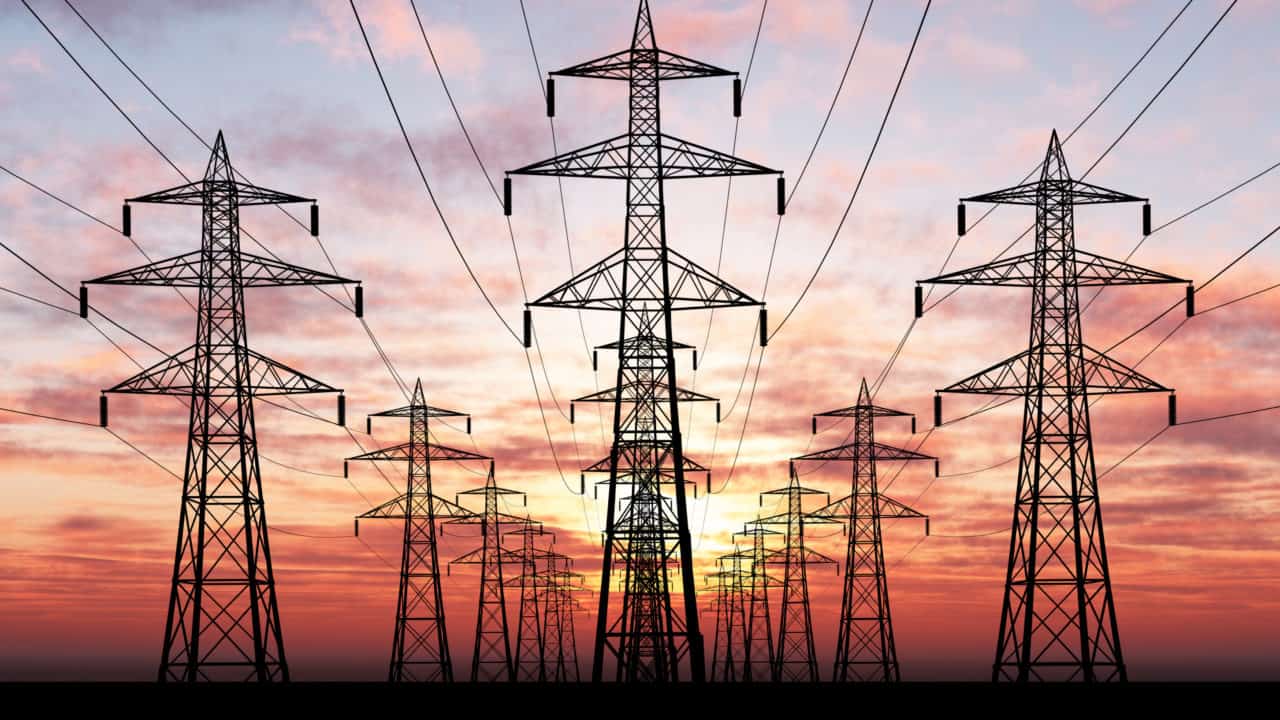
Infographic | Timeline | Resources
What is the Clean Power Plan?
The EPA’s so-called Clean Power Plan is President Obama’s marquee climate change initiative. Finalized by the administration on August 3, 2015, the Clean Power Plan would expand the Environmental Protection Agency’s power beyond the Clean Air Act, allowing the agency unprecedented authority to centrally plan the electric system as a whole: generation, transmission, distribution, and consumption. This regulation will have a devastating effect on America’s electricity industry, consumers, and the U.S. economy.
Historically, states have been responsible for the generation and retail provision of electricity, focusing on three goals: affordability, reliability and use of local fuel sources. The Clean Power Plan would dump these sensible state-determined goals and replace them with a federal mandate of reducing carbon production, specifically greenhouse gas emissions from existing power plants. The result will be more expensive and less reliable power for all Americans in exchange for negligible health or environmental benefits.
How Will the Clean Power Plan Affect You?

Bottom line: The EPA’s so-called Clean Power Plan will cause you to pay more for your electricity, threaten the reliability of the power outlets in your home and business, and threaten to turn out the lights in much of the country. Many Americans will pay more for less power.
The Clean Power Plan will make energy more expensive, harming consumers, businesses and the economy. It will increase consumers’ electric bills by giving low-carbon generation priority over low-cost generation and forcing states to replace economical coal power with more costly renewable and nuclear generation. The heartland states, consumers who rely on affordable electricity from coal-fired plants, will be hit the hardest by skyrocketing electric and gas bills.
The plan will also prematurely retire large quantities of reliable coal-based power while pushing intermittent renewable sources higher in the “merit order of dispatch.” This could complicate the task of balancing loads and threaten grid reliability.
Is the Clean Power Plan Constitutional?
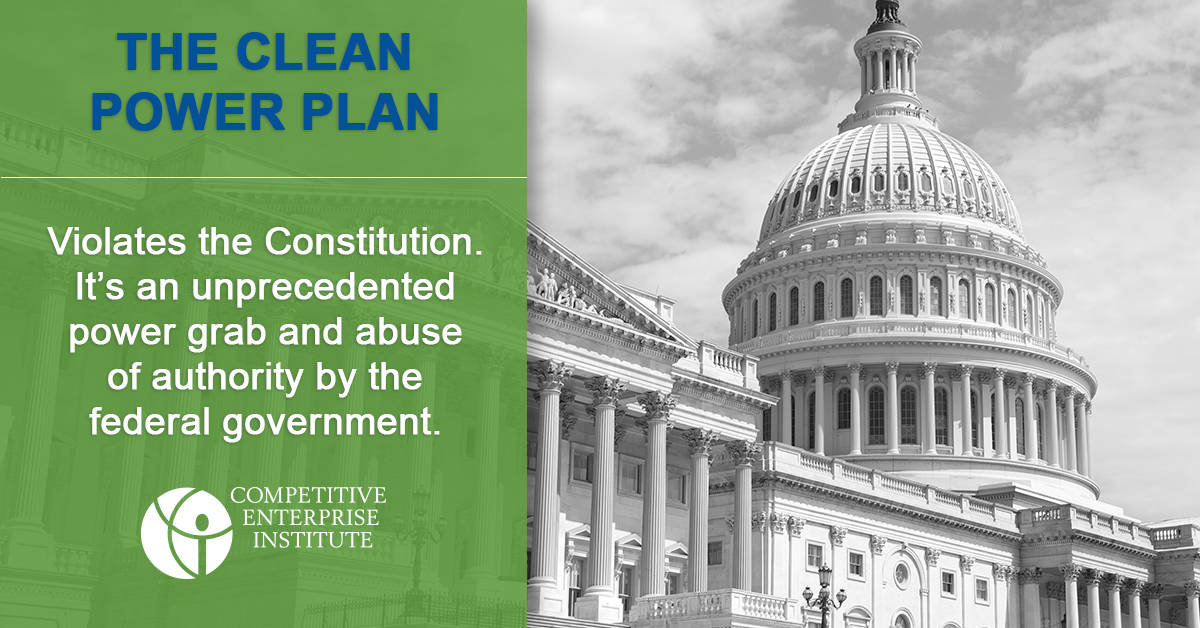
NO. The EPA’s so-called Clean Power Plan is both illegitimate and unlawful. If the CPP moves forward, it will be an unprecedented power grab and abuse of authority by the federal government.
The Clean Power Plan violates the U.S. Constitution’s Separation of Powers by authorizing the EPA to make law instead of solely implement it. The Clean Air Act (1963) does not grant the EPA the authority to restructure state electricity markets, revise state electricity policies, or establish statewide caps for CO2.
Since 1935, states have held the responsibility of overseeing the electric industry for their local residents. The Clean Power plan commandeers this authority from the 50 states and gives it to the EPA. Federally mandating emissions standards for each state’s energy sector is a violation of constitutionally protected state rights.
How Will the Clean Power Plan Affect Jobs and Businesses?
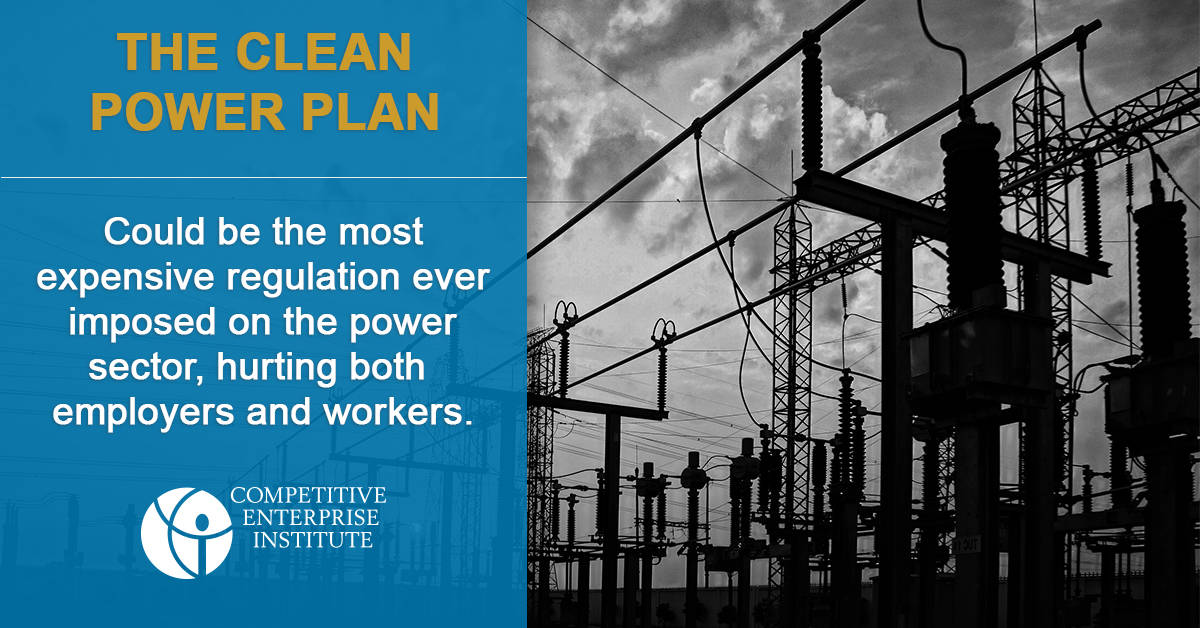
According to the economic consulting firm NERA, the EPA’s so-called Clean Power Plan could be the most expensive regulation ever imposed on the power sector, costing between $41 billion and $73 billion per year. Increasing operating costs for businesses and forcing energy-intensive manufacturing out of the country will destroy jobs and opportunities for workers. By the EPA’s own estimates, it would shutter 68,000 megawatts of fossil fuel electric generating capacity.
Are the Clean Power Plan’s Costs Worth the Benefits?

The EPA’s so-called Clean Power Plan’s alleged benefits are illusory. There are no proven environmental or health benefits from this plan.
Even though the EPA claims the plan will deliver $31 billion in climate benefits to the American people in 2030, there will be no practical difference to farmers, coastal communities, or polar bears given the miniscule (if any) temperature change. The Clean Power Plan aims to “fend off” less than 0.02°C of global warming by 2100 – too small an amount to have any discernible impact on sea-level rise, weather patterns, or any other climate-related variable.
How is CEI involved?
In December 2014, CEI’s Marlo Lewis and William Yeatman both filed regulatory comments on the EPA’s so-called Clean Power Plan arguing that the plan was unlawful, illegitimate, and inconsistent with underlying regulations. Both recommended the regulation be withdrawn.
Originally filed in December 2015, the Competitive Enterprise Institute (CEI) is suing the Environmental Protection Agency (EPA) over its so-called Clean Power Plan in the U.S. Court of Appeals for the District of Columbia. CEI is joined by 11 co-petitioners, including the Buckeye Institute in Ohio, the Independence Institute in Colorado, and the Rio Grande Foundation in New Mexico, arguing the Clean Power Plan goes beyond the EPA’s legal authority and would significantly raise the cost of electricity for many Americans.
Numerous lawsuits challenging the final plan were consolidated and will be heard before the U.S. Court of Appeals for the D.C. Circuit on September 27, 2016. The U.S. Supreme Court stayed the implementation of the EPA’s Clean Power Plan on February 9, 2016, until pending lawsuits are resolved.
TIMELINE
RESOURCES
Litigation:
- CEI v. EPA (2015 – present)
CEI is arguing the Clean Power Plan goes beyond the EPA’s legal authority and would significantly raise the cost of electricity for many Americans.
Studies:
- EPA’s Clean Power Plan Overreach (2015)
Agency Does Not Merit Chevron Deference to Implement Burdensome Rule
- EPA’s Illegitimate Climate Rule (2014)
Hidden from Voters, Contrary to Congressional Intent, and Crafted by Special Interests
Commentary:
-
EPA Proposes Clean Power Plan Repeal Rule (2017)
Even though there is no shortage of policy arguments against CPP, this repeal is based on legal facts. -
It’s Judgement Day for the EPA’s Clean Power Plan, America (2016)
The hearing of the Clean Power Plan will be unusual for several reasons. - Issues to Watch in Next Week’s Clean Power Plan Oral Argument (2016)
The CPP’s legal flaws are many and fatal
- Clean Power Plan Litigation: A Giant Ball of Uncertainties (2016)
In sum, Obama’s Clean Power Plan enjoys zero political legitimacy.
- Can Alternative Energy Replace Fossil Fuels?(2016)
The most pressing need of the more than 1 billion people with no access to electricity is not for low-carbon energy but for affordable and reliable energy. For the foreseeable future, abandoning fossil fuels would mean putting an energy-starved world on an energy diet.
- The Clean Power Plan’s Dirty Secret (2015)
Obama plans to put the bungling EPA in charge of the nation’s electricity
- States Should Just Say ‘No’ – 10 Reasons EPA’s Clean Power Plan Is Unlawful (2015)
EPA’s Carbon Pollution Standards Rule – the legal prerequisite for the CPP – is itself unlawful.
- Clean Power Plan: Revisiting EPA’s Bogus Climate Benefit Estimates (2015)
How can the CPP could possibly deliver multi-billion dollar climate benefits in 2030 when, according to the agency’s own climate model, the CPP would avert less than 0.02ºC of warming by 2100?
Regulatory Comments:
- Model Federal Implementation Plan for the Clean Power Plan (2016)
If all 50 states refused to lift a finger to implement the Clean Power Plan, then EPA would operate a nationwide cap-and-trade scheme. Such a policy has been rejected expressly by Congress.
- EPA’s Clean Power Plan by William Yeatman (2014)
Because the implementing regulations that mandate “subcategorization” are extant and therefore carry the force of law, EPA would have to amend them with a legislative rule before the agency could permissibly pursue its Clean Power Plan strategy of combining categories. Until the agency does so, the proposed Clean Power Plan will remain impermissibly inconsistent with its underlying regulations.
- EPA’s Clean Power Plan by Marlo Lewis (2014)
The CPP is illegitimate and unlawful. Its implementation costs are likely much greater than EPA estimates. It will increase electricity prices and raises reliability concerns. Its putative climate benefits are illusory. The regulation should be withdrawn.
